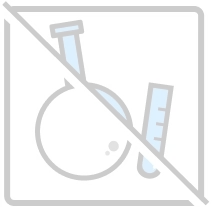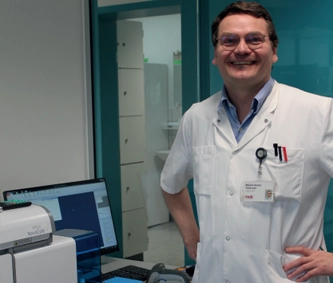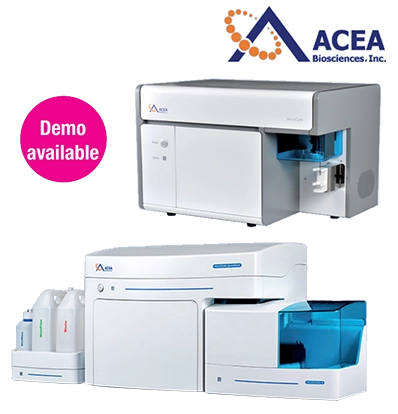From the retirement of one instrument to the purchase of four NovoCytes
The first NovoCyte was bought in 2014, and it was the first NovoCyte ever sold outside of Asia. “At that time, we were about to replace an old gamma-counter instrument that had just broken down. Back then, we typically relied on radioactivity-based assays to provide a coarse measure of cell proliferation,” Mikkel says.
Mikkel came across the NovoCyte by chance and quickly decided to try out the new instrument. “Instead of simply replacing the outdated gamma-counter with a new one, we could get a brand-new flow cytometer at roughly the same price. And although the instrument and the associated software were unproven at that time, the system appeared very accessible. By performing our proliferation assay on the NovoCyte, we were able to obtain a much more refined and precise picture of the type of subsets the cells belong to, as well as how each subset reacts to stimulation. Flow cytometry provides a very nuanced picture,” Mikkel says about the thoughts behind replacing the old radioactivity measurer with a brand new NovoCyte.
“When we received the NovoCyte, it turned out to be extremely easy to use.”
The NovoCyte shows a whole new level of user friendliness which made especially the daily routines much easier and training very fast to complete. “Soon after we received the first NovoCyte, we were able to see that the NovoCyte was extremely easy to use for everyone in the lab. On previous flow cytometry instruments, we had to go through time-consuming procedures involving manual parameter adjustments every day before running any actual samples. However, we could immediately see that the design team from ACEA had thought about this and made the NovoCyte intuitive and easy to use. Starting up the NovoCyte is fully automated, and literally only involves pushing a single, green button. Manually adjusting voltages and gains have become a thing of the past, and the software is blissfully free of clutter. If you have any prior flow cytometry experience, you’ll be ready to use the NovoCyte on your own after 15 minutes. For new users, it’s a matter of hours, not days, before you can operate it independently,” Mikkel elaborates.
Buying one of the very first NovoCytes produced wasn’t risk-free. “Back in 2014, the NovoCyte was a completely new instrument, so we were prepared to deal with a few start-up Mikkel Steen Petersen on the Easy Integration of Four NovoCytes Mikkel Steen Petersen and his colleagues at the Department of Clinical Immunology at Aarhus University Hospital in Skejby do both cutting-edge research and important routine analysis. The three NovoCyte Flow Cytometers and the NovoCyte Quanteon have become the backbone of the lab and are favored by students, lab technicians and researchers alike for the ease-of-use and stability. By Sine Bak Hansen, AH diagnostics Immune Discovery and Monitoring Mikkel Steen Petersen problems. But it was our experience that every time we asked, ‘Is this really how it should be?’, competent people listened. Whenever we have any problems, we are still being taken seriously, and that isn’t something you can take for granted,” Mikkel says about being the test pilot and having the opportunity to influence software developments to fit their needs.
“It is great to have AH diagnostics as a vendor and service provider. Not only because of their competence but also their reliability. You can just give them a call, and technical assistance isn’t far away. That’s worth a lot to us.”
Because the Department of Clinical Immunology has so many critical clinical samples, they are especially vulnerable to instrument breakdowns. Therefore, about a year later they got a second NovoCyte, and soon after a third. The fourth instrument, purchased only last year, was a Quanteon, which is a next-generation NovoCyte. Mikkel says: “We decided to purchase the Quanteon, rather than any of the other next-generation flow cytometers out there, for several reasons. With the Quanteon, there was no need for additional staff training, as it runs on the same software as the NovoCyte. Also, the Quanteon is a fairly competitive instrument, with avalanche diode arrays for enhanced sensitivity and four lasers for a wider selection of useful fluorochromes.”


